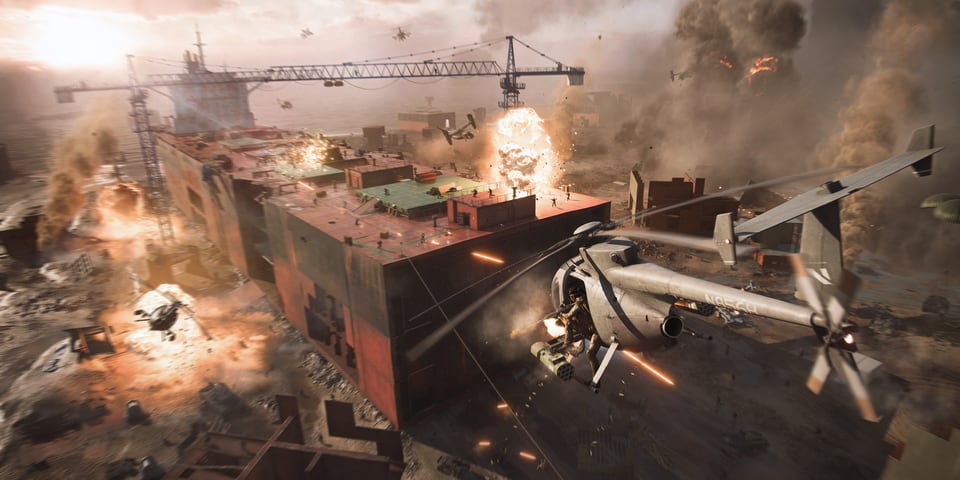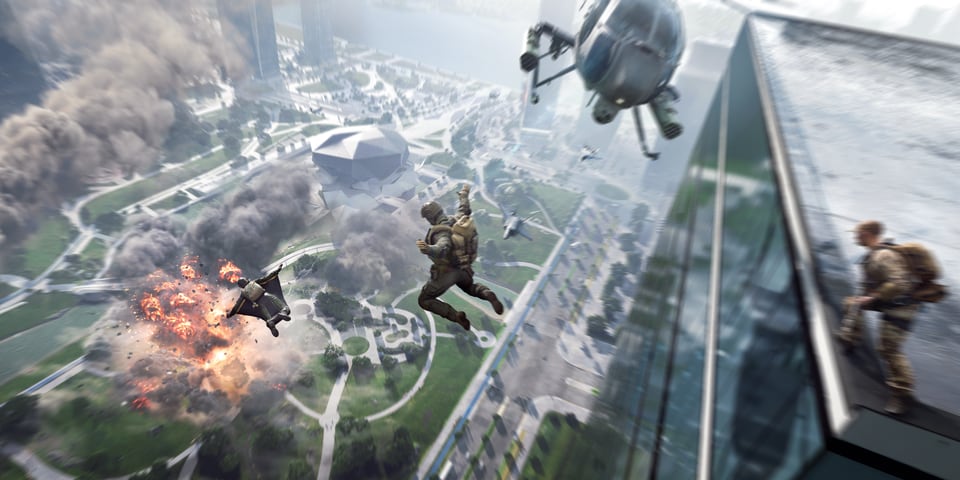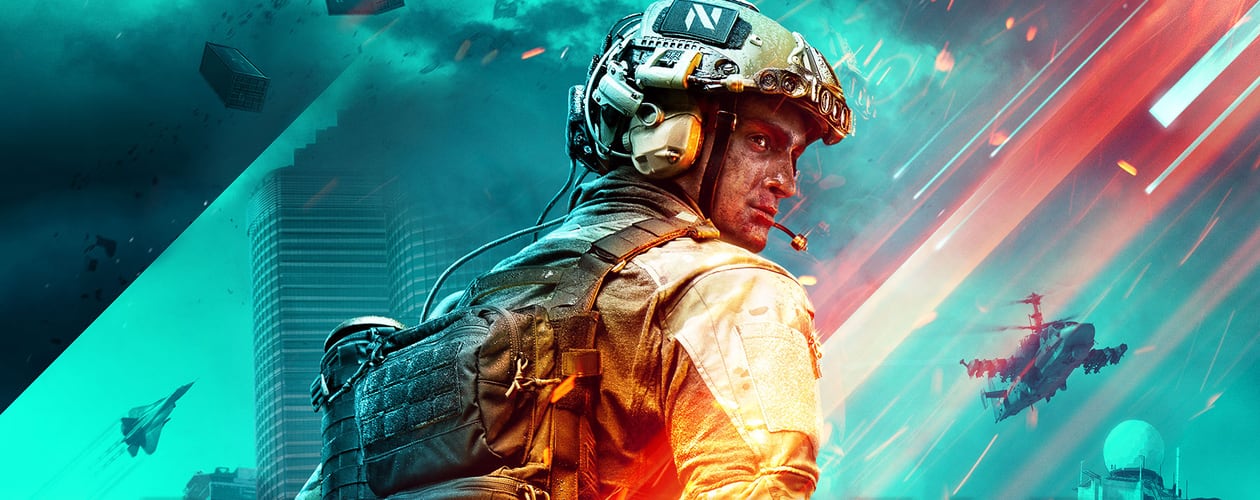The future doesn’t look good in Battlefield 2042 – now revealed for release this October. Oh, I don’t mean that the game looks bad, far from it, but rather that the near future setting is about as grim (and plausible) as it gets. The climate crisis takes hold, there’s a huge global refugee crisis, and the old Cold War powers go back to their proxy wars on a scale never seen before.
More specifically, that scale is huge 128-player battles the likes of which are both rarely seen in video games and a first for the Battlefield series. It’s this key fact that leads to a split for this cross-generational release. The game is still coming to PlayStation 4 and Xbox One, but will be limited to 64-players on these platforms, while PS5, Xbox Series X|S and PC get to romp around with the full compliment.
This vast player count will feature in both Conquest and Breakthrough, two staples of the series that return in All-Out Warfare, and it’s led to DICE having to reconsider how they design their maps. The maps are all much bigger, that’s for sure, but there’s a new clustered design ethos that creates different regions across the map. One area might be densely clustered skyscrapers, another a vehicle friendly highway, elsewhere an abandoned football stadium. Each of these points has multiple capture points, and an emphasis is being shifted so you have to capture all of a sector’s control points to take it for your team.

You could look at this as borrowing the landmark-heavy design of maps for a battle royale, but maybe it’s more like stitching together smaller maps together. We’ll have to wait until we can go hands on to see how big an impact it will really have. The distances between objective clusters in Conquest could very easily see you playing in a single corner of a map for the entire battle, for fear of letting the sector slip into enemy hands.
Either way, there’s a great variety to the maps that DICE has shown so far. Hourglass evokes Spec Ops: The Line, the glowing neon city on one side, a sand-consumed football stadium on the other and an abandoned supply convoy in the middle, and that’s all before the huge sandstorm blows in to shroud the world in gloomy reddish-brown darkness. Then there’s Breakaway in the Antarctic, the largest map in Battlefield 2042 and the series to date. There’s one section high up on a ridge that evokes Damavand Peak, and will be great for the mysterious Specialist with the wingsuit.

Speaking of which, the entire class and gear system is being shaken up by Specialists. Now, instead of picking a class, you pick one of these ten characters, each coming with a primary gadget – Webster’s grappling hook as an Assault class, Boris’ sentry drone as an Engineer – and a passive trait – Maria’s Combat Surgeon reviving allies with full health, and Casper’s Movement Sensor alerting him to incoming enemies. That last one is pretty wild, given how maligned snipers have been through the eras of Battlefield, but DICE assure us that it will only detect faster-moving enemies, so you can still sneak up… or use Webster’s grapple to just blitz them.
But maybe Webster’s got a sniper rifle now? There’s no limits on what any Specialist can equip as a gun. You can pick any of them and go into battle with an SMG, LMG or sniper rifle, and not only that, but you can swap out attachments on the fly using the ‘plus system’, lifting an idea from the Crysis series.
It’s a sudden shift for the series that I’m sure will herald much more freeform play. DICE explain that you can go from one more open part of the map to a more tightly packed area and swap out attachments to adapt your weaponry for closer range. That sounds great, meaning you won’t be pigeonholed until your next spawn. On the other hand, it could see the roles of classes diminished to the point they don’t matter much anymore, DICE giving in to the way that players will chase particular meta-breaking guns, tipping the balance away from certain classes. At least you can now probably guarantee that a Maria Falck is going to actually be interested in reviving allies, instead of just being fodder for Medic memes, as they so often are in BF1 and BFV.

There’s other changes coming as well. Now any player can summon a vehicle on the map, and vehicles have been redesigned so different seats have complementary roles – a vehicle with four players in it will be much more flexible than one with just two, maybe having a dedicated spotter seat, AA weaponry, and so on. While DICE declined to state that squads were staying the same size, that only goes to imply that squad structure is changing. Oh, and AI bots will be available to allow for single players and small groups to play maps and learn the ropes, as well as filling out servers with dropping player counts.
There’s a battle pass-supported live service, though DICE state that this will allow all maps and gameplay additions to remain free. That’s also before we talk about the other game “experiences” in Battlefield 2042. Hazard Zone is described as a new high-stakes game type that is not a battle royale – there is no battle royale mode at launch – and a third experience developed by DICE LA that will be revealed at EA Play Live in July. Apparently this will be one that appeals to long-term Battlefield fans.
The modern and near-future setting for Battlefield 2042 might seem like a pretty safe bet for DICE, given the clamouring for a return to the modern day from a certain cachet of the franchise’s fans. This is much more than Battlefield 4 redux, with a lot of bold changes that will have a lasting impact on DICE’s venerable game series.
Battlefield 2042 guides & more from TheSixthAxis
- Battlefield 2042 is out in October 2021 – 128 players, Specialists, Maps, Modes & everything you need to know
- Battlefield 2042 on PS4 & Xbox One limited to 64-players and smaller maps
- 8 unanswered questions from the Battlefield 2042 reveal
- The Maps of Battlefield 2042
- Battlefield 2042 – Specialists and Classes Guide


